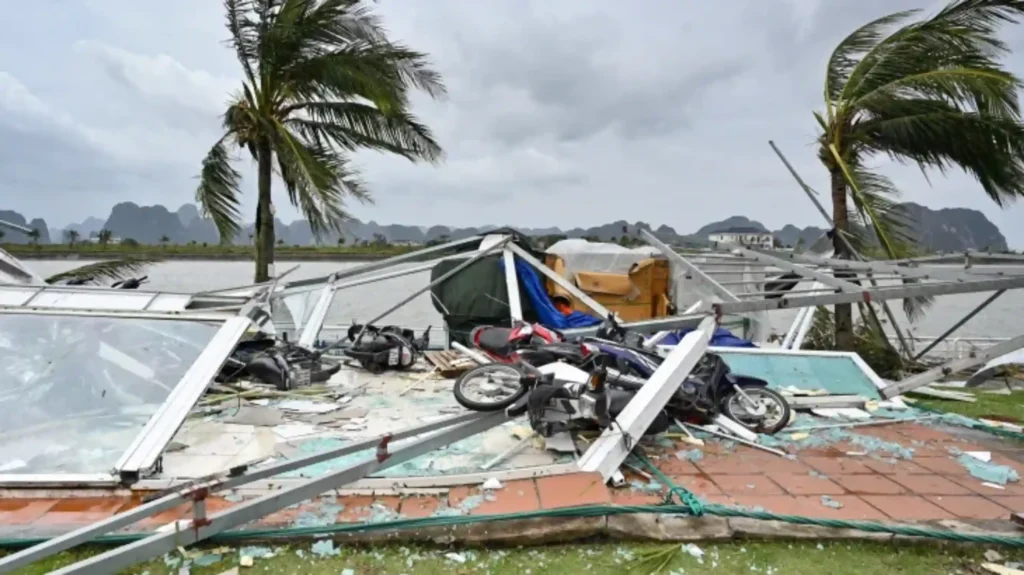Typhoon Yagi devastation has caused massive cleansing in South Asia, and India has initiated Operation Sadbhav for the widespread devastation and humanitarian disaster. The typhoon that struck the region mid-September is among the strongest in decades to have battered millions of people and wrecked havoc in several countries.

Typhoon Yagi devastation: Storm’s Path and Impact
Typhoon Yagi devastation, at its peak and a Category 4 storm, had struck north-eastern India and Bangladesh and continued its course to Myanmar. The storm brought along winds at a speed of 150 mph (240 km/h) with torrential rain, causing unprecedented flooding, landslides, and loss in properties in various parts of the affected regions. Low-lying places have been most vulnerable as the deluge swamped villages and towns and created a trail of destruction.
Humanitarian Crisis due to Typhoon Yagi devastation
The Typhoon Yagi devastation has unleashed such a strong humanitarian crisis, leaving tens of thousands of displaced individuals and seriously crippling services in electricity and clean water supply to many. Operations during the relief phase have certainly not been easy, for disasters of this magnitude were not accessible to all affected regions in a short time. Thus, the Indian government responded by launching Operation Sadbhav, which allocated considerable resources toward aid and relief immediately to those most severely affected.
Operation Sadbhav for rescuing Typhoon Yagi destruction

Operation Sadbhav means “Operation Goodwill.” And so, India stepped in with the launching of this program to organize all-round relief. It incorporates Indian Army, Navy, and Air Force deployment with rescue work, food distribution, and medical help. The government has established temporary sheds for the displaced families and is working on the resupply of essential services which were hampered by TTyphoon Yagi devastation.
Typhoon Yagi destruction sparks climate change issue
The devastation brought about by Typhoon Yagi devastation has renewed interests on rising counts and intensities of extreme weather patterns associated with global warming. According to experts, among various changes in the atmosphere, elevated ocean temperatures promote and intensify storms like the very powerful that rage with enough energy to cause major devastation. This disaster demands increased climate resilience along with better preparedness in the areas where such disasters will most strongly impact.
Long-Term Recovery from Typhoon Yagi destruction
While immediate relief is part of it, long-term recovery and rebuilding are also in priority. The road to progress will be in infrastructures’ repair, restitution of livelihoods, and other risk reduction measures ahead. Governments and other agencies are already planning these long-term needs, but the road to recovery will be arduous and protracted.
Conclusion Typhoon Yagi ravages
And as the impact of this devastation by Typhoon Yagi devastation begins to settle over South Asia, the primary focus remains on immediate relief and long-term recovery. The cooperative measures of nations, through their mutual coordination, emphasis the fact that how huge the resolution is within this region to surpass such adversity. Lessons from Typhoon Yagi will be crucial for shaping future policy and strategic approaches on disaster management and climate adaptation planning and ultimately will see advanced planning for similar extreme weather events around the world.

